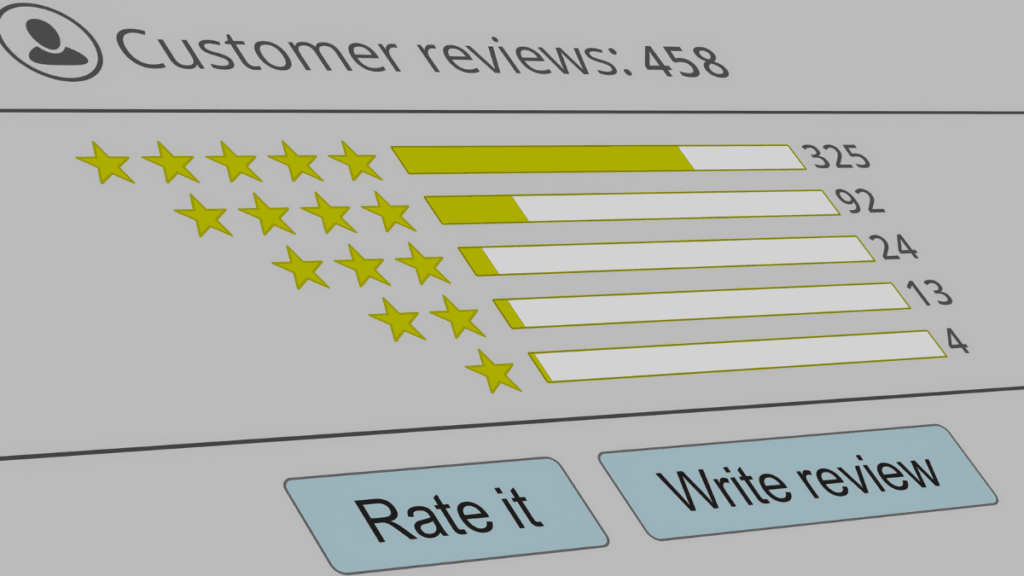can you trust online shopping reviews sets the stage for this enthralling narrative, inviting you to explore whether the opinions you see online are truly as genuine as they appear. As online shopping becomes an everyday part of life, reviews can make or break our purchasing decisions, shaping not only what we buy but how much we trust the sellers behind the screen.
From understanding the different types of reviews—like verified purchases, expert insights, and user-generated feedback—to learning about the methods used to manipulate ratings, this topic dives deep into the world of online credibility. You’ll discover how platforms try to weed out fake reviews, strategies savvy shoppers use to spot the real deal, and the psychological forces that influence our trust. By exploring notable cases of review fraud, this discussion highlights the importance of transparency and provides practical tips for both shoppers and sellers aiming to create a trustworthy online marketplace.
Understanding the Role of Online Shopping Reviews

Online shopping reviews have become an integral part of the e-commerce experience, dramatically shaping how consumers make purchasing decisions. With the rise of digital marketplaces, shoppers increasingly rely on the experiences and opinions of others to assess the quality, authenticity, and value of products before hitting the “buy” button.
Consumer reviews don’t just help potential buyers—they also impact the reputation and success of online retailers. Positive feedback can boost a seller’s profile and credibility, while a flood of negative reviews can discourage new customers and damage a brand’s image. Over time, the aggregation of reviews has created a form of collective trust, where shoppers depend on community feedback as a substitute for in-person evaluation.
Historically, customer reviews began as simple star ratings and basic comments, but have since evolved into sophisticated systems incorporating photos, videos, and detailed narratives. Trends show that as online shopping has grown, so has the volume and influence of user-generated reviews, making them a key driver in the evolution of digital commerce.
Types of Online Shopping Reviews
Not all online reviews are created equal. Understanding the different types of reviews can help buyers interpret feedback more accurately and make informed decisions. Reviews can be categorized based on their origin, verification status, and the perspective of the reviewer.
| Review Type | Source | Typical Features | Trust Level |
|---|---|---|---|
| Verified Purchase | Customer who bought the product | Purchase confirmed by platform; often includes order details or photos | High |
| Unverified | General users or non-purchasers | Lacks confirmation of purchase; may be vague or generic | Low to Medium |
| Expert | Industry professionals or review websites | In-depth analysis; may include technical details and comparisons | Medium to High |
| User-Generated | Regular shoppers | Personal experiences; subjective opinions; may include images | Varies |
Common Indicators of Trustworthy Online Reviews
Distinguishing between genuine and fake reviews can be challenging, but certain indicators can help consumers evaluate credibility. Authentic reviews often demonstrate depth, balance, and specific details about the product experience. Conversely, suspicious reviews may raise red flags that signal manipulation or dishonesty.
- Reviews using specific product details, such as features, use cases, and performance observations, tend to be more trustworthy.
- Balanced feedback that includes both positives and negatives is usually a sign of authenticity.
- Well-written reviews with proper grammar and thoughtful structure often indicate a real user’s experience.
On the other hand, it’s important to watch out for certain warning signs that a review may not be genuine.
- Extremely positive or negative language without any specific details.
- Multiple reviews posted in a short timeframe that sound similar.
- Profiles with little or no purchase history or generic usernames.
- Overuse of s or the product name, resembling promotional material.
- Short, vague, or repetitive comments.
Genuine reviews often include phrases like “After two weeks of daily use, I noticed the battery lasts around 8 hours,” while suspicious reviews might simply say “Great product, works perfectly!” with little context.
Methods Used to Manipulate Online Reviews
Sellers or third parties sometimes employ various tactics to manipulate online reviews, with the intent to inflate product ratings, mislead buyers, or harm competitors. Understanding these methods can help users remain vigilant and make more informed choices.
| Manipulation Method | Description | Impact | Detection Strategies |
|---|---|---|---|
| Fake Positive Reviews | Hiring people or using bots to post overly positive reviews | Artificially boosts product ratings and misleads buyers | Check for repetitive content, poor grammar, and new reviewer accounts |
| Review Bombing | Coordinated posting of negative reviews, often for reasons unrelated to product quality | Damages reputation and can skew perception unfairly | Observe for sudden influx of negative reviews tied to specific events |
| Incentivized Reviews | Offering discounts, freebies, or compensation in exchange for positive feedback | Compromises the objectivity of the reviewer | Look for disclosure statements or sudden upticks in positive ratings |
| Review Swapping | Mutual agreements between sellers to exchange positive reviews | Creates a false sense of quality and reliability | Compare reviewer history for patterns across multiple products or sellers |
The consequences of manipulated reviews are significant. Not only do they erode consumer trust, but they also undermine the integrity of online marketplaces. Buyers may become more skeptical, platforms may face regulatory scrutiny, and honest sellers can lose out to unethical competitors.
Technologies and Policies to Detect Fake Reviews
To combat review manipulation, e-commerce platforms use advanced technologies and stringent policies. Automated algorithms help detect patterns typical of fraudulent activity, while human moderators provide contextual judgment that software might miss. The effectiveness of these approaches varies depending on the platform and the sophistication of the fraudulent tactics.
Algorithms excel at processing large volumes of data, spotting duplicate content, and recognizing suspicious posting patterns. However, human moderators can interpret nuance, sarcasm, or cultural context that machines might overlook. Combining both methods generally yields the best results.
| Platform | Automated Tools | Human Moderation | Review Authenticity Policies |
|---|---|---|---|
| Amazon | AI-based pattern recognition, purchase verification | Manual investigation of flagged reviews | Strict rules against incentivized and artificial reviews; regular audits |
| Google Shopping | Spam filters, anomaly detection | Review escalation for human review | Policy requiring honest, experience-based feedback |
| Tripadvisor | Fraud detection systems, IP monitoring | Content moderators review reports and appeals | Zero tolerance for paid or fake reviews; transparency initiatives |
These policies and technologies are continuously updated as new manipulation tactics emerge, ensuring the ongoing reliability of review systems.
User Strategies for Evaluating Review Credibility

While platforms take action to maintain review integrity, shoppers themselves play a crucial role in assessing the credibility of product feedback. Practical self-checks and critical analysis can help avoid falling for misleading or deceptive reviews.
- Read multiple reviews, focusing on a range of ratings and sentiments.
- Check for detailed descriptions of product use and performance.
- Look at reviewer profiles for signs of authenticity, such as purchase history and diverse activity.
- Compare feedback across different platforms for consistency.
- Be cautious of reviews that are overly emotional, repetitive, or lack substance.
- Search for expert opinions or independent review sites to supplement user feedback.
To illustrate, consider the following examples of suspicious and genuine reviews:
“Best headphones ever! I love it so much. Buy now!” (suspicious—overly enthusiastic, lacks detail)
“I commute daily and the noise cancellation blocks out subway sounds very well. However, the ear pads feel a bit warm after long use.” (genuine—specific, balanced, and informative)
The Psychological Impact of Online Reviews on Buyers

Online reviews don’t just inform—they also influence. The psychological effects of reading product feedback can strongly sway consumer behavior, sometimes even overriding personal preferences or prior research. Two important concepts at play are social proof and confirmation bias.
Social proof refers to the tendency of individuals to follow the actions or opinions of a larger group, especially when making uncertain decisions. A product with hundreds of glowing reviews can feel safer or more desirable, even if the reviews aren’t entirely objective. Confirmation bias, meanwhile, leads buyers to selectively seek out reviews that support their initial preference, reinforcing what they already want to believe.
- Positive reviews can create a bandwagon effect, making buyers more likely to purchase with confidence.
- Negative reviews, even if few, can deter buyers or cause them to scrutinize product flaws more closely.
For example, a new smartphone with overwhelmingly positive reviews may compel a hesitant buyer to proceed, while a handful of critical comments about battery life could trigger doubt, even if the majority of feedback is favorable.
Case Studies: Notable Incidents Involving Online Review Fraud
Several high-profile cases have demonstrated the widespread impact of online review fraud, highlighting the risks and consequences for both platforms and consumers. These incidents have pushed many companies to strengthen their detection systems and improve transparency.
| Case Name | Platform | Method Used | Outcome |
|---|---|---|---|
| Sunday Riley FTC Settlement | Sephora | Employees directed to post fake positive reviews | FTC intervention; mandated transparency and compliance monitoring |
| Amazon Fake Review Crackdowns | Amazon | Seller rings organized to buy and post fake reviews | Permanent bans, legal action, and increased security measures |
| Tripadvisor Hotel Review Fraud | Tripadvisor | Hotels soliciting positive reviews and offering incentives | Blacklistings, public warnings, and platform policy updates |
These cases illustrate how the exposure of fraudulent review activities can cause significant reputational damage, trigger regulatory consequences, and prompt widespread consumer skepticism toward online ratings.
Recommendations for Platforms to Improve Review Trustworthiness: Can You Trust Online Shopping Reviews
Strengthening the credibility of online reviews requires ongoing commitment from both platforms and sellers. By adopting robust measures and transparent policies, e-commerce sites can better protect consumers and foster a trustworthy shopping environment.
- Implement stricter verification processes to ensure that only genuine purchasers can leave reviews.
- Use advanced machine learning to detect and filter out suspicious patterns in review content and posting behavior.
- Encourage reviewers to provide detailed, balanced feedback and disclose any incentives or affiliations.
- Offer clear reporting tools for users to flag questionable reviews directly on product pages.
- Display reviewer history and credibility ratings to help shoppers evaluate feedback sources more effectively.
- Regularly audit and publicly share statistics about fake review detection and removal efforts.
Greater transparency between buyers and sellers, combined with active community moderation, can significantly improve the reliability and usefulness of online shopping reviews.
Final Wrap-Up
In the end, while online reviews can be a powerful tool for making informed decisions, it pays to approach them with a healthy dose of skepticism and curiosity. By understanding what makes a review trustworthy and being aware of potential red flags, shoppers can better navigate the digital marketplace and make choices with greater confidence. Remember, your next purchase could be influenced by the words of a stranger—so make sure you know who to trust.
Expert Answers
How can I tell if an online review is fake?
Look for vague language, repeated phrases, overly positive or negative tone, and check if the reviewer has a history of similar comments across different products.
Are expert reviews more reliable than user reviews?
Expert reviews often provide more in-depth analysis and are usually less biased, but it’s still important to verify the expertise and objectivity of the source.
Do all online retailers verify purchase-based reviews?
No, not all retailers verify whether a reviewer actually purchased the product, so always look for a “verified purchase” badge when possible.
Can negative reviews be trusted?
While negative reviews can be helpful, sometimes they may be exaggerated or manipulated by competitors. Look for balanced feedback and detailed explanations.
What should I do if I suspect a review is fake?
Report the review to the platform, avoid relying on it for your decision, and look for a wider range of feedback before making a purchase.